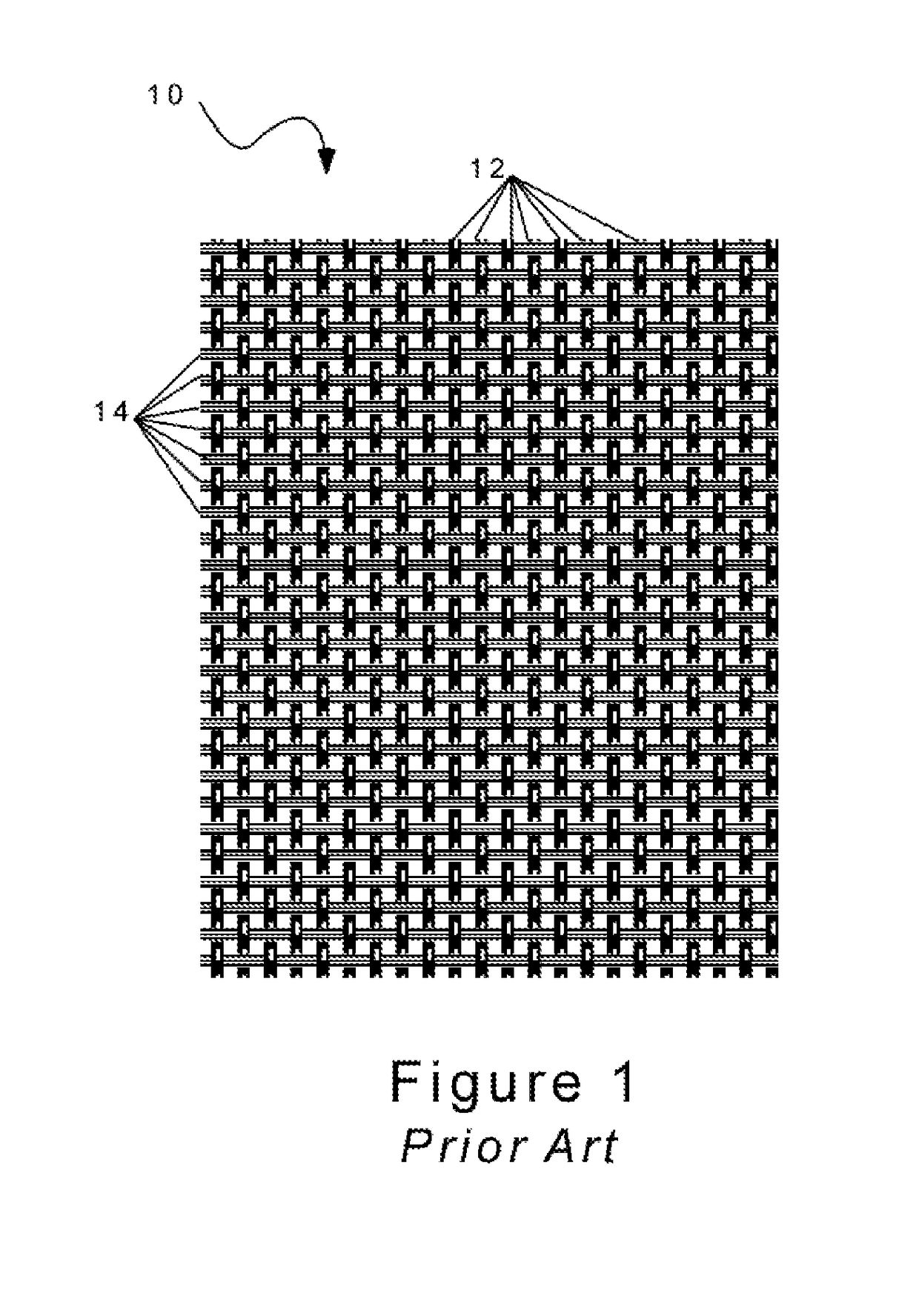Plexus of Filaments with Linked Members
- Summary
- Abstract
- Description
- Claims
- Application Information
AI Technical Summary
Benefits of technology
Problems solved by technology
Method used
Image
Examples
Example
DETAILED DESCRIPTION OF DRAWINGS
[0033]FIG. 1 is a schematic illustration of woven filaments 10, as described by prior art. As shown in FIG. 1, and as is typical of woven filament structures, weave pattern 10 typically includes a series or plurality of longitudinal or vertical “warp” filaments 12 traversing along the zero degree axis which perpendicularly engage with a plurality of lateral or horizontal “weft” filaments 14 which traverse along the 90 degree axis. As shown, warp filaments 12“interlace”; cross in front and behind; weft filaments 14, for example, the patterned behavior of the filaments is to first pass over a filament and then under the next filament, and repeat this patterned process with a plurality of regularly spaced perpendicular filaments. As know in the art, the close proximity of the warp filaments 12 and weft filaments 14, is what provides the structural integrity, or integration of the fibers into one plexus of material 10; primarily through the friction betwe...
PUM
 Login to View More
Login to View More Abstract
Description
Claims
Application Information
 Login to View More
Login to View More - R&D
- Intellectual Property
- Life Sciences
- Materials
- Tech Scout
- Unparalleled Data Quality
- Higher Quality Content
- 60% Fewer Hallucinations
Browse by: Latest US Patents, China's latest patents, Technical Efficacy Thesaurus, Application Domain, Technology Topic, Popular Technical Reports.
© 2025 PatSnap. All rights reserved.Legal|Privacy policy|Modern Slavery Act Transparency Statement|Sitemap|About US| Contact US: help@patsnap.com



